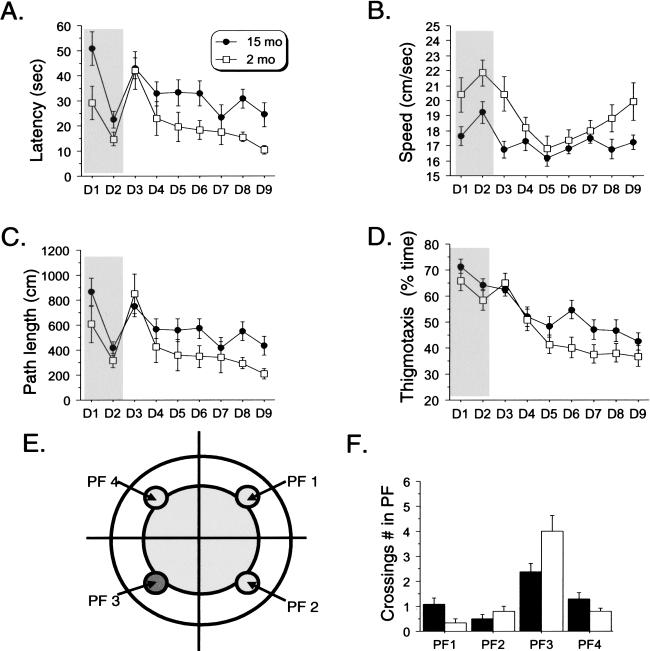Figure 1.
Middle-aged mice display impaired spatial memory in the Morris Water maze. (A) Mean escape latency per day across days. Both middle-aged and young mice decreased their escape latency across both the visible (days 1 and 2) and hidden (days 3 through 9) versions of the task (significant day effect; all P < 0.001). Middle-aged mice showed lower latencies in both versions (visible: [F(1,21) = 5.00, P = -0.03]; Hidden: [F(1, 21) = 6.74, P = -0.02]). (B) Swimming speed. Significant effect of age [F(1, 21) = 7.39, P = -0.013], day [F(1, 8) = 7.28, P < 0.0001], and the interaction age × day [F(8, 168) = 2.12, P = 0.037]. (C) Path length. Both groups learned to localize the platform across both versions of the task (significant day effect: all P > 0.001). However, middle-aged mice showed impaired performance in the hidden version (days 4 through 9; significant Age effect: [F(1, 21) = 5.47, P = 0.03]), but not in the visible version (days 1 and 2 [F(1, 21) = 2.43, P = 0.13]). (D) Thigmotaxis. Significant age effect (days 4 through 9, [F(1, 21) = 5.22, P = 0.03]). (E) Scheme depicting platform location (dark grey circle in quadrant 3) and equivalent locations in the other quadrants. (F) Probe trial: crossings on previous exact spatial position of the platform (PF in quadrant 3). Middle-aged mice displayed lower performance (significant age effect: [F(1, 21) = 6.06, P = 0.02])

